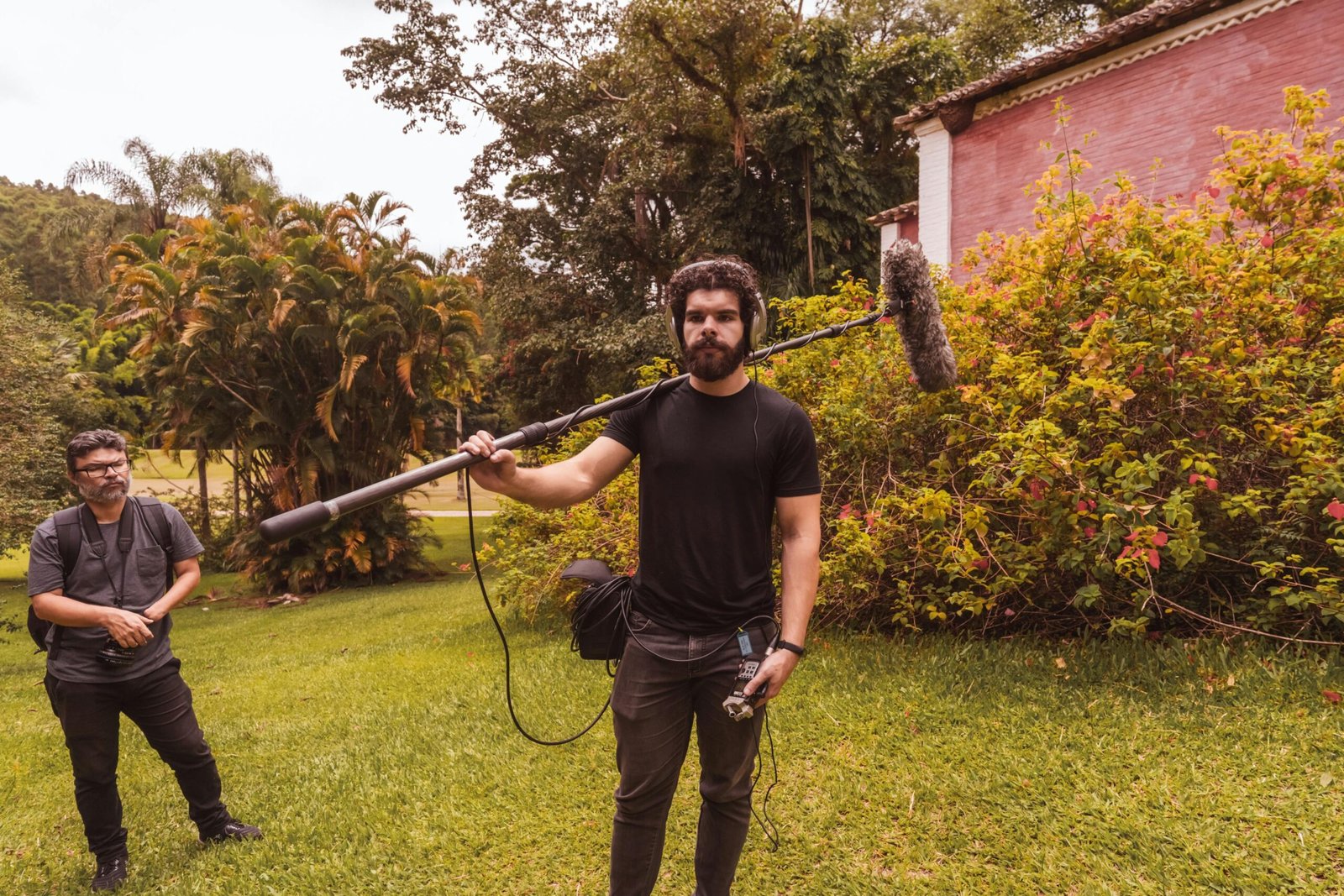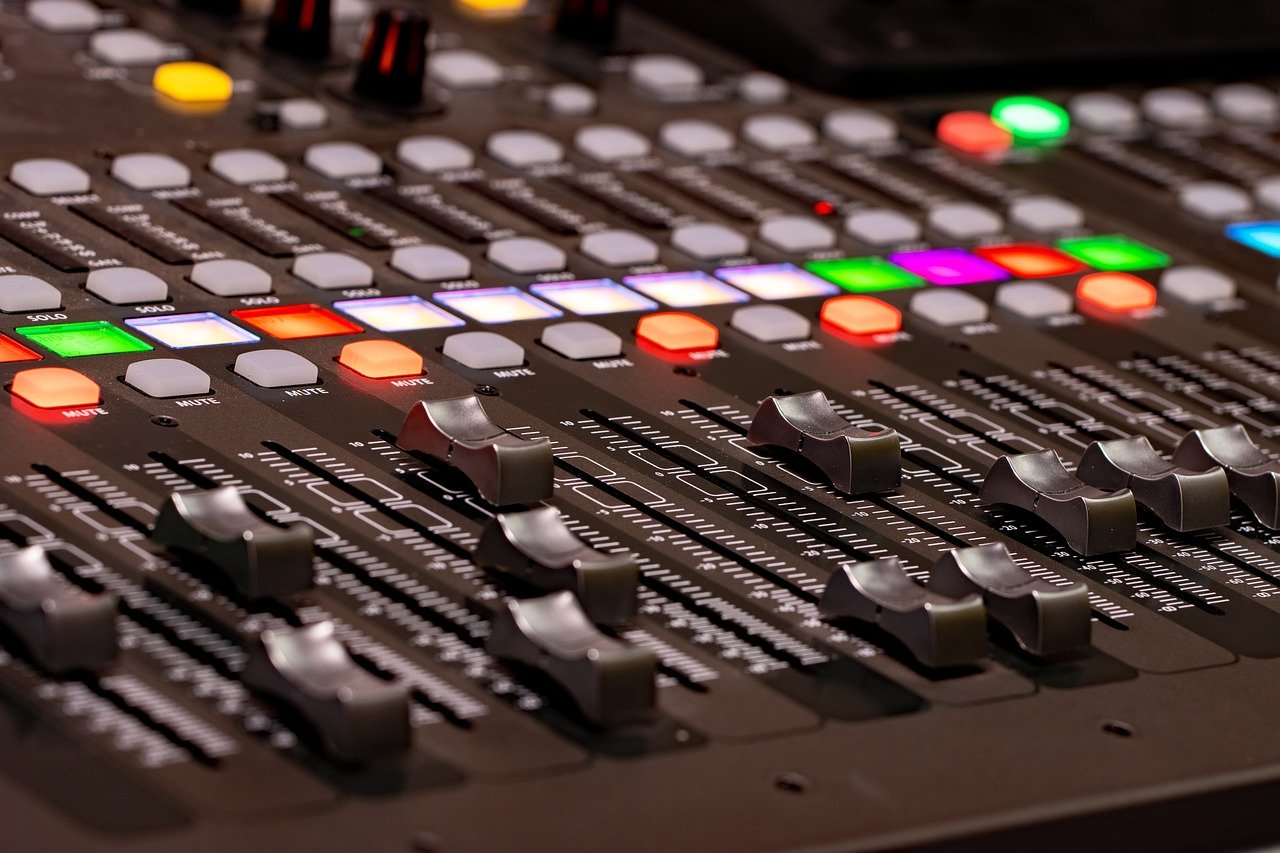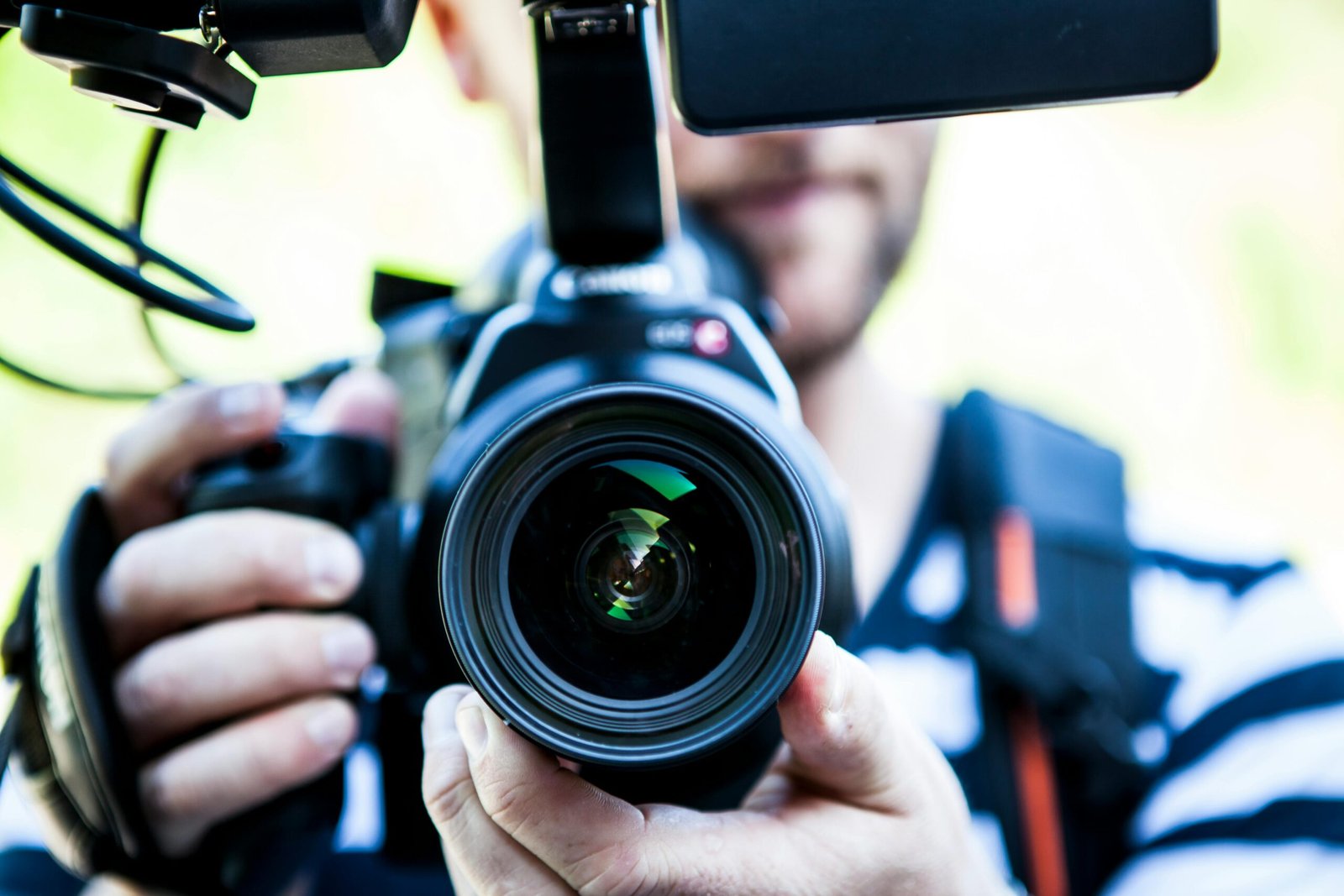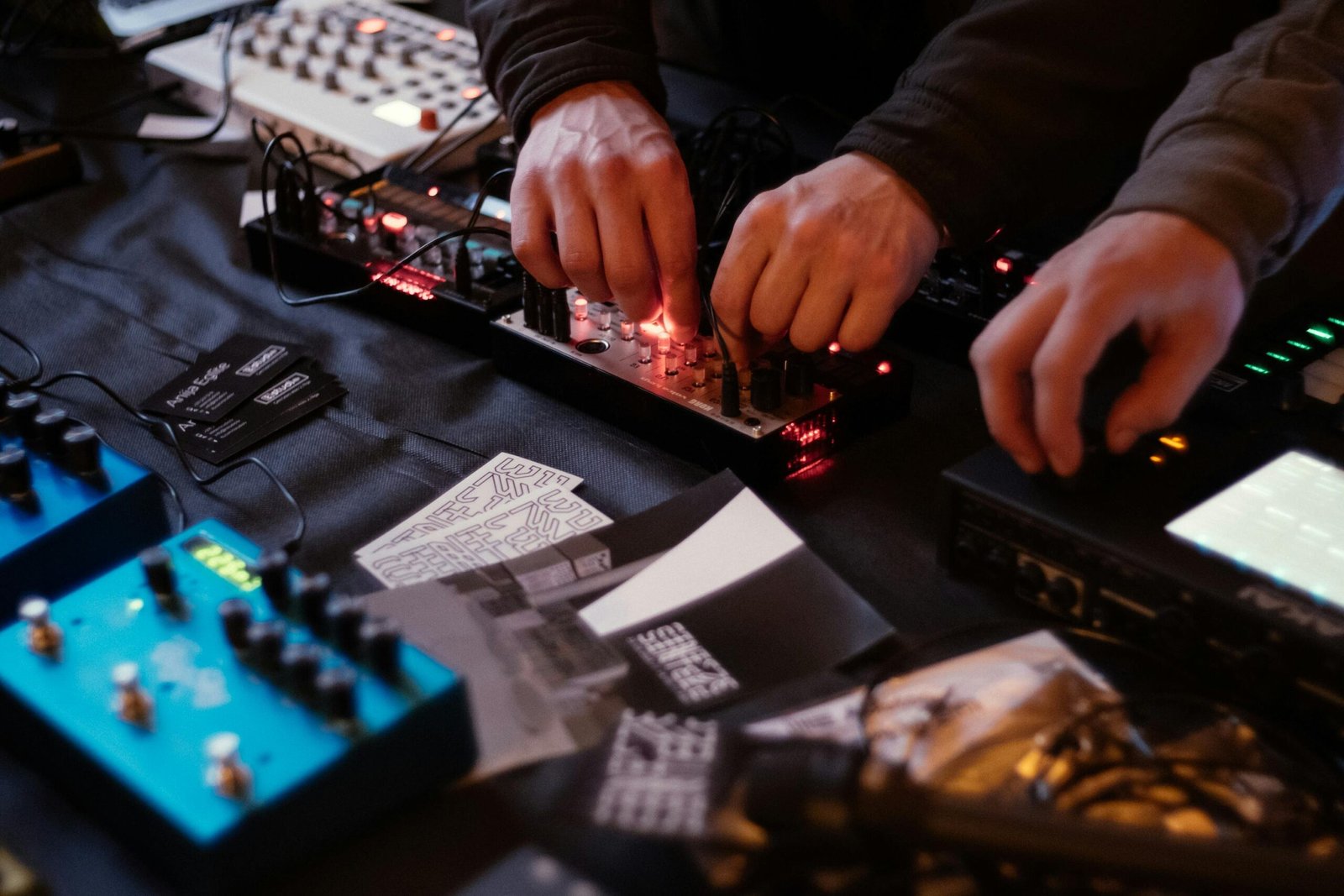Master Lighting for Videography: Basics, Techniques, and Advanced Setups Lighting can make or break your…
Sound in Videography: Basics, Techniques, and Advanced Tips
Sound in videography is crucial. It can make or break your production, adding depth and emotion that visuals alone can’t convey. From the basics of sound recording to advanced audio techniques, understanding how to capture and manipulate sound is essential for any videographer. In this comprehensive guide, we’ll delve into the essentials of sound in videography, including choosing the right microphone, reducing background noise, and the intricacies of post-production audio editing.
Basics of Sound Recording
Understanding Sound Waves
Sound waves are vibrations that travel through the air and are captured by microphones. These waves are then converted into electrical signals that can be recorded and manipulated. Understanding the properties of sound waves, such as frequency and amplitude, is the foundation of sound recording.
Types of Sound in Videography
In videography, there are several types of sound to consider: dialogue, ambient sound, sound effects, and music. Each type serves a different purpose and requires different recording techniques and equipment.

Choosing the Right Microphone
Types of Microphones
Microphones come in various types, each suited for specific tasks. The most common types include dynamic microphones, conde nser microphones, ribbon microphones, and lavalier microphones.
Selecting the Right Mic for Different Scenarios
Choosing the right microphone depends on the shooting environment and the type of sound you want to capture. For instance, a shotgun microphone is ideal for capturing dialogue in a controlled environment, while a lavalier microphone is perfect for interviews and presentations.
Audio Levels and Mixing
Understanding Audio Levels
Audio levels refer to the loudness of the recorded sound. Maintaining proper audio levels is crucial to avoid distortion or clipping. The goal is to capture sound at levels that are neither too low nor too high.
Basic Principles of Audio Mixing
Audio mixing involves balancing various sound elements to create a cohesive audio experience. This process includes adjusting volume levels, equalization, and adding effects to enhance the overall sound quality.

Reducing Background Noise
Techniques for Noise Reduction
Background noise can be a major issue in videography. Techniques like using directional microphones, recording in quiet locations, and utilizing soundproofing materials can help reduce unwanted noise.
Tools and Equipment for Noise Reduction
There are several tools available for noise reduction, including noise gates, filters, and noise reduction software. These tools can help clean up your audio recordings in post-production.
Using Lavalier Microphones
Benefits of Lavalier Microphones
Lavalier microphones, or lapel mics, are small and easily concealed, making them ideal for interviews and on-camera presentations. They provide clear and consistent audio quality.
Proper Placement and Usage Tips
For the best results, place the lavalier microphone close to the speaker’s mouth but hidden from the camera. Ensure that it is securely attached to avoid rustling noises from clothing.
Boom Microphone Techniques
Advantages of Boom Microphones
Boom microphones offer excellent sound quality and flexibility. They are mounted on boom poles, allowing the operator to position the mic close to the sound source without entering the frame.
Best Practices for Using Boom Mics
When using a boom microphone, aim to position it just out of the camera’s view, pointing towards the sound source. Boom operators must be skilled in maintaining a consistent distance and angle to ensure even sound capture.

Wireless Audio Systems
Overview of Wireless Systems
Wireless audio systems eliminate the need for cables, providing more freedom of movement. They typically consist of a transmitter and receiver, allowing sound to be captured and transmitted wirelessly.
Tips for Using Wireless Audio
To avoid interference, choose a wireless system that operates on a clear frequency. Regularly check the batteries and signal strength to ensure uninterrupted audio capture.
Field Recorders
Importance of Field Recorders
Field recorders are portable devices used to capture high-quality audio on location. They are essential for capturing ambient sounds, interviews, and other audio elements outside the studio.
Choosing the Right Field Recorder
Select a field recorder that offers the necessary features for your projects, such as multiple input channels, high-resolution recording, and reliable battery life.
Post-Production Audio Editing
Basics of Audio Editing
Audio editing involves cutting, trimming, and arranging audio clips to fit the video timeline. It also includes adding effects, adjusting levels, and ensuring smooth transitions between audio elements.
Tools for Audio Post-Production
Popular audio editing software includes Adobe Audition, Pro Tools, and Audacity. These tools offer a wide range of features for professional audio editing and mixing.

Syncing Audio with Video
Methods for Syncing Audio and Video
Syncing audio with video is crucial for a cohesive viewing experience. Methods include using a clapperboard during filming, syncing by audio waveforms, and using timecode.
Software and Tools for Syncing
Software like PluralEyes and Adobe Premiere Pro can automate the syncing process, saving time and ensuring precise alignment of audio and video tracks.
Sound Design
What is Sound Design?
Sound design is the art of creating the audio elements of a film or video. It involves crafting sounds that enhance the visual experience, from ambient noises to dramatic sound effects.
Techniques for Creating Engaging Soundscapes
Effective sound design involves layering different sounds, using reverb and delay, and creatively manipulating audio to create a rich and immersive soundscape.

Foley Techniques
Introduction to Foley
Foley is the art of creating sound effects using everyday objects. These sounds are added in post-production to enhance the realism of the audio.
Tips for Creating Realistic Sound Effects
To create realistic Foley effects, use high-quality microphones, record in a quiet environment, and experiment with different objects to achieve the desired sound.
Using Audio Plugins
Overview of Audio Plugins
Audio plugins are software tools that enhance and manipulate audio tracks. They can add effects, correct issues, and improve overall sound quality.
Recommended Plugins for Videographers
Some popular audio plugins include Waves, iZotope, and FabFilter. These plugins offer a wide range of effects and tools for professional audio production.
Capturing Dialogue
Techniques for Clear Dialogue Recording
Clear dialogue recording is essential for storytelling. Use directional microphones, record in quiet environments, and position mics close to the speaker to capture clear and intelligible dialogue.
Equipment for Capturing Dialogue
Essential equipment for dialogue recording includes shotgun microphones, lavalier mics, and boom poles. Each type has its advantages depending on the recording situation.

Using Ambience in Videography
Importance of Ambient Sounds
Ambient sounds add depth and context to your video. They create a sense of place and enhance the viewer’s immersion in the scene.
Tips for Recording Ambience
Record ambient sounds separately from dialogue to have more control in post-production. Use high-quality field recorders and microphones to capture clean and detailed ambient audio.
Creating Soundscapes
What are Soundscapes?
Soundscapes are layered audio environments that create a specific atmosphere or mood. They are used to enhance the storytelling in videography.
Techniques for Building Immersive Soundscapes
To build immersive soundscapes, layer different sounds, use spatial audio techniques, and consider the emotional impact of each sound element.
Audio Equipment Maintenance
Tips for Maintaining Audio Equipment
Proper maintenance of audio equipment ensures longevity and reliable performance. Regularly clean microphones, check cables for wear, and store equipment in protective cases.
Common Issues and Solutions
Common issues include static, interference, and battery problems. Regularly inspecting and testing your equipment can help identify and resolve these issues before they affect your recordings.
Advanced Audio Techniques
Advanced Recording Techniques
Advanced techniques include using multiple microphones, recording in binaural audio, and experimenting with surround sound. These methods can elevate the audio quality of your productions.
Tips for Professional-Level Audio
For professional-level audio, invest in high-quality equipment, use proper recording techniques, and continually refine your audio editing skills.

Audio for Different Genres
Tailoring Audio for Different Types of Videos
Different genres require different audio approaches. For example, documentaries might focus on clear dialogue and natural sounds, while action films might prioritize impactful sound effects.
Genre-Specific Audio Tips
Understand the conventions of each genre and tailor your audio elements accordingly. Use sound to enhance the emotional and narrative aspects of the video.
Troubleshooting Audio Issues
Common Audio Problems
Common audio problems include background noise, audio distortion, and sync issues. Identifying these problems early can save time and improve the final product.
Solutions for Troubleshooting Audio
Use noise reduction tools, monitor audio levels during recording, and double-check sync points in post-production. Having a systematic approach to troubleshooting can resolve most audio issues.
Conclusion
Sound in videography is more than just an afterthought; it’s a critical component that enhances the viewer’s experience. From choosing the right microphone to mastering post-production techniques, each step in the audio process contributes to the overall quality of your video. By understanding and applying the principles discussed in this guide, you can significantly improve the sound quality of your videography projects.
FAQs
How can I reduce background noise in my recordings?
To reduce background noise, use directional microphones, record in quiet environments, and utilize noise reduction tools in post-production.
What microphone is best for outdoor videography?
Shotgun microphones are typically the best choice for outdoor videography due to their directional nature, which helps capture clear audio while minimizing background noise.
How do I sync audio with video in post-production?
You can sync audio with video using software like PluralEyes or Adobe Premiere Pro, which automate the syncing process based on audio waveforms.
What is the best way to capture dialogue on a busy set?
On a busy set, use directional microphones like shotguns or lavalier mics placed close to the speakers to capture clear dialogue while minimizing background noise.
How important is sound design in videography?
Sound design is crucial in videography as it enhances the storytelling by adding depth, emotion, and realism to the visuals.




